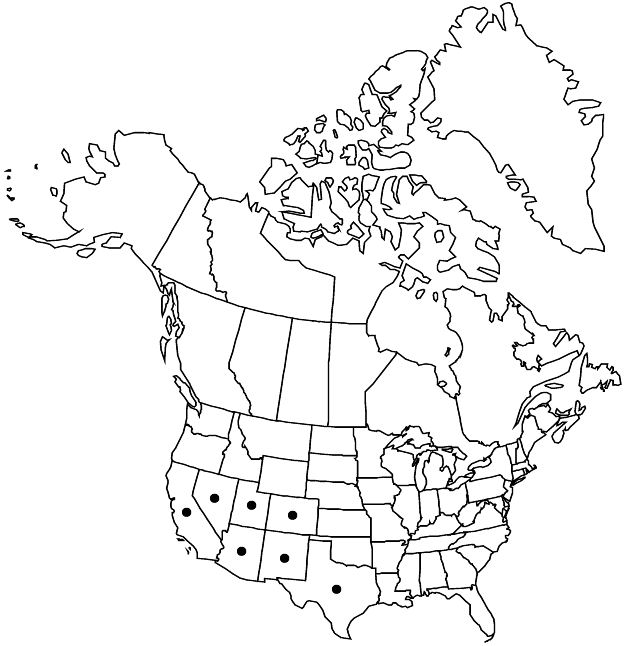Euphorbia parryi
Amer. Naturalist 9: 350. 1875.
Herbs, annual, with taproot. Stems usually prostrate, rarely ascending-erect, 5–70(–85) cm, glabrous. Leaves opposite; stipules distinct, linear-subulate, usually lacerate and divided into 2 or more slender segments, rarely entire, 0.6–1.4 mm, glabrous; petiole 1–2.5 mm, glabrous; blade linear to narrowly oblong, (5–)10–25(–30) × 2–5 mm, base usually symmetric, sometimes slightly asymmetric, attenuate, margins entire, occasionally ± revolute, apex acute to obtuse, mucronulate, surfaces glabrous; only midvein conspicuous. Cyathia solitary or in small clusters on short axillary branches at distal nodes; peduncle 1–5 mm. Involucre broadly cupuliform-campanulate, 1.2–1.7 × 1.4–1.8 mm, glabrous; glands 4, reddish pink to greenish yellow, deeply concave, elliptic to oblong, 0.2–0.3 × 0.3–0.5 mm; appendages white, elliptic to oblong, usually forming narrow margin around gland, sometimes rudimentary, 0.2–0.6 × 0.3–0.7(–1.1) mm, distal margin entire. Staminate flowers 40–55. Pistillate flowers: ovary glabrous; styles 0.5–0.7 mm, 2-fid nearly entire length. Capsules ovoid-globose, 2–2.3 × 1.5–2.5 mm, glabrous; columella 1.4–2 mm. Seeds mottled brown and white because of irregularly loose and tight outer covering, broadly ovoid, rounded-angular in cross section, 1.4–1.8 × 0.8–1 mm, smooth or only inconspicuously roughened.
Phenology: Flowering and fruiting spring–fall.
Habitat: Sand dunes, other sandy habitats.
Elevation: 200–2200 m.
Distribution

Ariz., Calif., Colo., Nev., N.Mex., Tex., Utah, Mexico (Chihuahua).
Discussion
Euphorbia parryi is similar to E. missurica, differing only by the generally narrow involucral gland appendages and prostrate habit in E. parryi as opposed to the conspicuous involucral gland appendages and ascending-erect habit in E. missurica. Euphorbia parryi has sometimes been considered the western race of E. missurica (D. S. Correll and M. C. Johnston 1970).
Selected References
None.